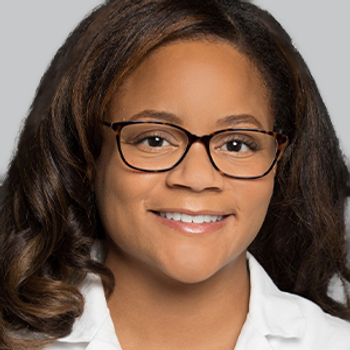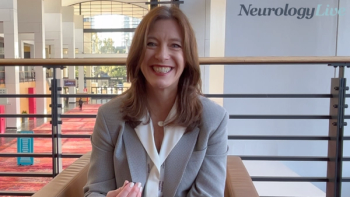
NeuroVoices: Martina Bebin, MD, MPA, on Infantile Spasms Awareness
The professor of neurology and pediatrics at the University of Alabama at Birmingham Epilepsy Center sat down to discuss a multitude of topics surrounding Infantile Spasms Awareness Week.
The first week of December is known as Infantile Spasms Awareness Week (ISAW), a time for communities to come together and raise awareness for infantile spasms, a disorder that affects nearly 1 in every 2000 children. Children with infantile spasms suffer from seizures that typically begin between 3 and 8 months of age and occur most commonly after waking up or sometimes during sleep.
Infantile spasms can have lasting effects on children, including later life developmental issues, and have the potential to develop into other epilepsies. Structural change in the brain is known as the most common cause for infantile spasms, but the overall range of causes is broad. Martina Bebin, MD, MPA, feels as though the week not only raises awareness, but helps direct children and caregivers to resources within the community that may be going through the same experience or even point them to better treatment strategies.
In the latest edition of
NeurologyLive: Why is it important to raise awareness of infantile spasms? Do you believe this population is underrepresented in terms of research or overall awareness?
Martina Bebin, MD, MPA: I think it’s incredibly important because it is 1 of the most catastrophic, devastating, types of epilepsy that we see in infancy. On top of that, it has many etiologies. Unfortunately, parents may get caught off guard and don’t know what they are. It’s imperative that we raise awareness, so people know what it is and what resources are available. One of the most critical pieces is early recognition, initiation of treatment, and getting the child to a neurologist. This allows them to get the work-up that is necessary and for treatment to being.
Thankfully, over the last several years there have been significant advances in understanding the etiology of infantile spasms and interest in different ways of management due to the seriousness of the disorder. Of course, more is needed. But it’s nice to see there are a group of primarily pediatric neurologists and epilepsy specialists who have devoted an incredible amount of time into unraveling this story and the reasons why children may have infantile spasms.
What are some of the challenges that children with infantile spasms face?
First, it can start very young—even as early as the first couple of weeks of life. One of the biggest concerns is that it puts them at a very high risk to have refractory seizures. These are seizures that don’t respond to medication. Many of them have an underlying genetic reason for the spasms, or they may have a specific type of brain malformation, which can also cause these spasms as well. That is why it is critical to do the diagnostic workup. Some of these babies not only have spasms, but they may have more subtle seizures that go along with them. It requires a skilled child neurologist or epilepsy specialist to oversee their care.
How can this disorder impact quality of life as a child gets older? What are the chances they develop into 1 or multiple different types of epilepsies?
One of the aspects of care that we’re becoming more aware of is that the longer you have refractory epilepsy, the more it can negatively impact your neural development. Some of the work that I do in tuberous sclerosis is certainly associated with the risk for autism or autism spectrum disorders. It’s not only looking at the seizure management, but the impact on developmental outcomes and the quality of life for these patients, which can be significant.
How are infantile spasms treated? Are steroid therapies or treatment with vigabatrin strong enough treatments?
We have had vigabatrin approved in the US since 2009. Adrenocorticotropic hormone has been used even longer than that. More recently, we have the addition of steroids like prednisone. In some cases it does help, but there certainly is more need for more therapeutic options. Ultimately, we want to stop the spasms completely. We want to be on the preventative side of this where we have to know which babies are at risk. We’re beginning to change our strategy in tackling spasms earlier. The ultimate goal is being able to identify those babies at risk because that will influence the strategies we take for treatment. All in all, much more work needs to be done.
What are your thoughts on epilepsy surgery? If a patient presents as a severe case, should this be considered, or are there obstacles to it that young in life?
It should certainly be considered. In order for a child under 2 years old to go through the workup of surgery, it needs to be at a tertiary epilepsy center, primarily the children’s hospitals that have an active surgery program. In general, if a child comes in with spasms and you’re working on your third medicine after they’ve failed the first 2, you certainly need to be looking to see if there’s a structural explanation for their seizures.
We know the longer those seizures go on, the more negative impact it has on their development. We’ve had babies that we’ve operated on well under 1 year, but it’s because we’ve found the origin of the seizures. We can then discuss with the family the significant chances of a successful outcome and how it can change the trajectory of the child’s development all while bringing the seizures under control. It’s something that requires a lot of intense management and follow-up. We also need to work with the families so that weeks and months go by with refractory epilepsy and we’re not making advances in the strategy of how to treat them.
What is the greatest unmet need for children with infantile spasms?
There are multiple things to point to. It’s great that there’s Infantile Spasms Awareness Week because raising awareness and helping parents have access to options is fundamental. This way they can find their path, get their child to a neurologist, get a diagnosis, and start treatment. The more we have clinicians who are interested in tackling this very difficult type of epilepsy, the better. This may lead to more treatment options on the horizon. Understanding the complexities of epilepsy surgery in this patient population will also be helpful. This leads us to question where it may fit in the decision-making process for a very young child or even infant.
How can expanding research efforts on infantile spasms lead to understanding more about epilepsy in general?
In some ways, yes. What’s really nice is because there are so many causes of infantile in some of the genetic epilepsies, the families of those specific communities learn from each other. They take from each other, including from different conditions, and think, “Can that be translated into my particular circumstance?” That’s one of the great things about Infantile Spasms Awareness Week because it encompasses many of the advocacy groups of which children are affected by and strengthens their voice. It’s really a nice thing to see that there is cross collaboration. From a clinician perspective, there are clinicians who work in a different disease state and can learn from the area that I work in. [It’s a] nice thing to see. You’re not just siloed within your disease focus, because outside collaboration is sometimes where the best advances are made.
Transcript edited for clarity.
Newsletter
Keep your finger on the pulse of neurology—subscribe to NeurologyLive for expert interviews, new data, and breakthrough treatment updates.









































